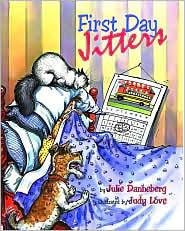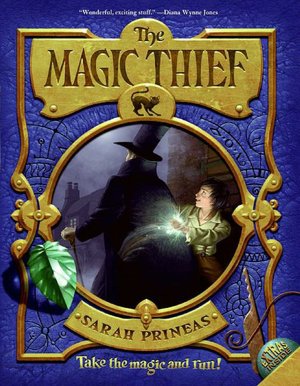I love using the click and clunk strategy! It has worked so well to help my struggling readers slow down and try to make sense of what they are reading.
I thought long and hard before introducing this to my students. In general, I try to avoid strategies that muck around too much with basic reading--I don't want kids to have to think about fifteen different things at once. But the click and clunk strategy really doesn't require very much explanation. If you understand an idea, it "clicks". If you don't, it "clunks". Easy!
More on clicks and clunks
Collaborative Strategic Reading (includes clicks and clunks)
Catalyst Article (click on the "Literacy Project" image on the right; the article is on page 27)
At least, it's easy with nonfiction. It's been my experience as a reader of nonfiction that I need to keep close tabs on my comprehension, even at the sentence level. In nonfiction, I need to be sure that I am understanding every sentence as I go along. My readers did well with marking clicks and clunks in nonfiction text.
But when I read fiction, sometimes I need to let those "clunks" slide. Authors of fiction often try to keep some information hidden. There are often little details that don't fit. Readers have to notice these, and set them aside, trusting in the author to make everything work out by the end. This is tricky for struggling readers. They don't know when to deal with a clunk and when to let it slide.
So what can I do to help my fourth graders to find success? They are working toward more complex text, more stories that have complicated sequences, unreliable narrators, and tricky mysteries. I decided to make a simple graphic to show students how they can use those clunks as opportunities--to reread, to solve a word, or to change their mental models.
The kids seem to like it, and we've used it together several times.
Of course, it's good to have a collection of stories that might cause students to feel this shift in their mental models. Here are some good possibilities.
"The Open Window" by Saki
This short story appears in many anthologies, and you might even be able to find a version floating around the web. I like how it packs a great deal into a short space! There is a moment in the story that feels quite creepy, but then everything shifts as the reader realizes that all is not as it seems.
First Day Jitters
The two fabulous new teachers that I work with shared this on the first day of school! It's an easy book, but it clearly shows how a reader might need to make some accommodations to deal with new information.
Waiting for a White Knight
This short story from Cricket magazine is another good one for exploring how readers need to change their mental models. There will definitely be a few sentences that clunk as students work their way to figuring out what is really going on. (You may be able to read this on EBSCO through your local, school, or college library.)
The Magic Thief
I'm trying this as a read aloud with my students. The narrator tells the truth, but he doesn't tell the whole truth. As a result, there are little bits here and there that add up to a bigger story. The book is also full of figurative language, like personification and similes.
Do you have any other stories that help readers to build mental models and think about their clicks and clunks? Please share them!



Hi Emily,
ReplyDeleteI enjoyed reading about your use of 'clicks and clunks', the chart is great, I like the way that you have connected this to mental modeling.
Over the last four years I have been working on my COR Reading Comprehension Framework project with several hundred children - in the framework we use the clicks and clunks as a method of using compensatory reading strategies. We found that this was a very empowering technique. Danielle Troger has written an article in 'Catalyst' the link is on the side of my Blog, - page 25 talks about how she used this technique in the COR frame work.
Thank you! I've updated the post to include a link to this helpful resource. I'm glad to hear that it's worked for so many kids! I was amazed at how quickly students started using the words naturally to talk about their reading processes. Do you find that they become independent with using fix-up strategies?
ReplyDeleteI love your graphic for click or clunk! It really communicates in a simple way the reading process. I have been using many of your resources over the last couple of months. I've used your compare/contrast and cause/effect text structure packets from TPT. I also used your test strategies power point from Slideshare. I feel like my teaching has been so focused and effective with these materials. Oh, I am also using the Max Mission set with a small group of strugglers and they love it! Those are great. I did the Salamander Cloze with my class and it was so interesting to see what they did. But they had no background knowledge at all of salamanders. I wonder if next time I should do the Vernal Pools or Puddles text first from the C/C set to build a little background knowledge. Just thought I'd share how I'm using your work. Love it!
ReplyDeleteThanks so much for writing! The salamander cloze is so interesting, isn't it? I have another one about mole salamanders--email me and I'll send it your way. (elkissn@yahoo.com) It's always neat to see how they deal with a different text on the same subject. And I'm so glad that you found the materials useful! :)
DeleteHi Emmily,
ReplyDeleteWe found that it was very empowering for the children, in both a buddy and small group situation. The children learned to help one another and this was a great benefit in itself. It was particularly good for the poorer readers when they used thecue cards because they got an opportunity to held others, even those that were iterated as better readers.
Sorry about the typos. Won't let me correct.
ReplyDeleteIt works well in a literacy circle situation with every one given a role eg time keeper, questioner, clicks and clunks expert etc.
Hi Emily
ReplyDeleteI just found your blog...looks like you have a lot of good stuff here. I'm your newest follower.
Vicky
Traditions Laughter and Happily Ever After